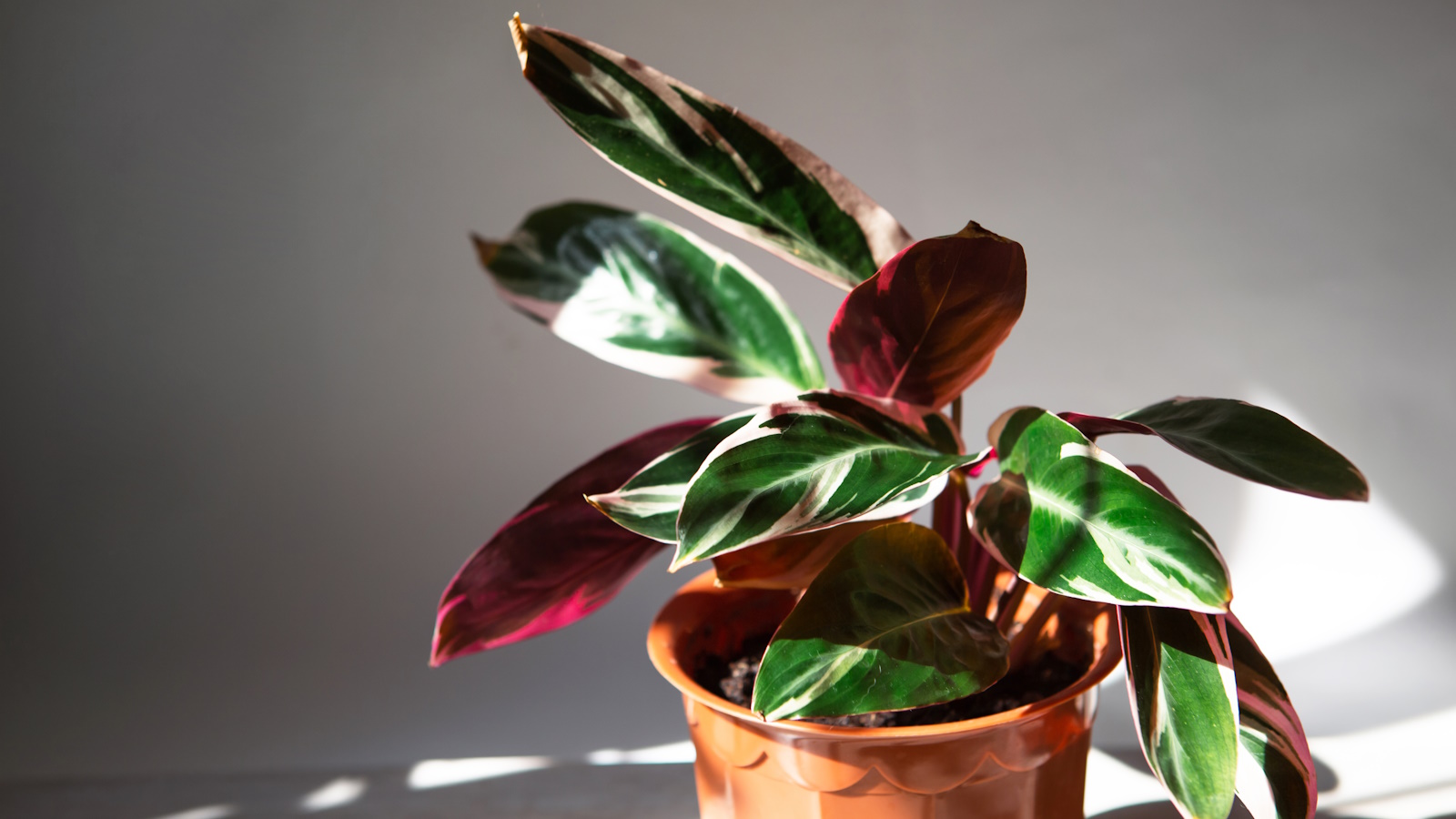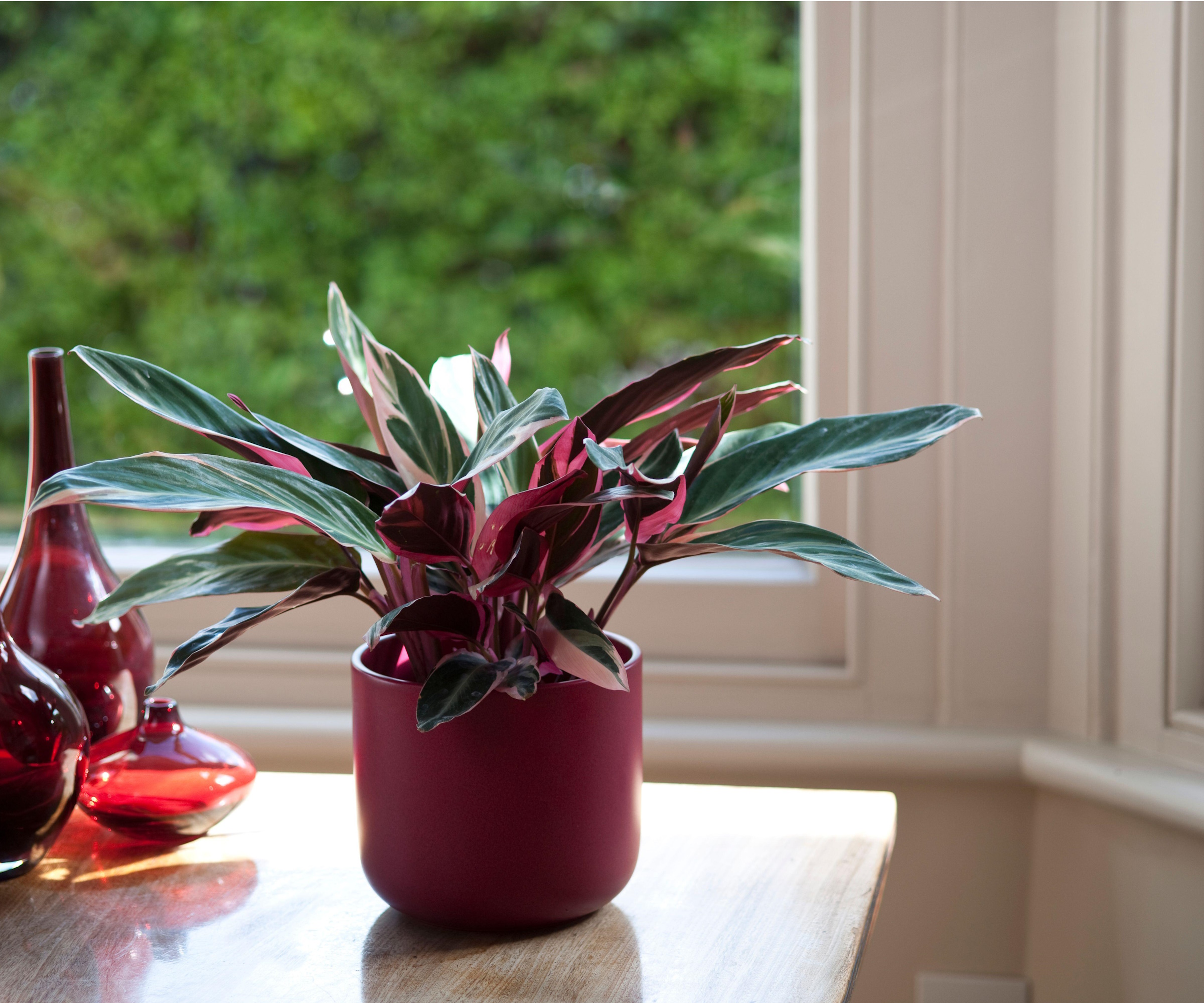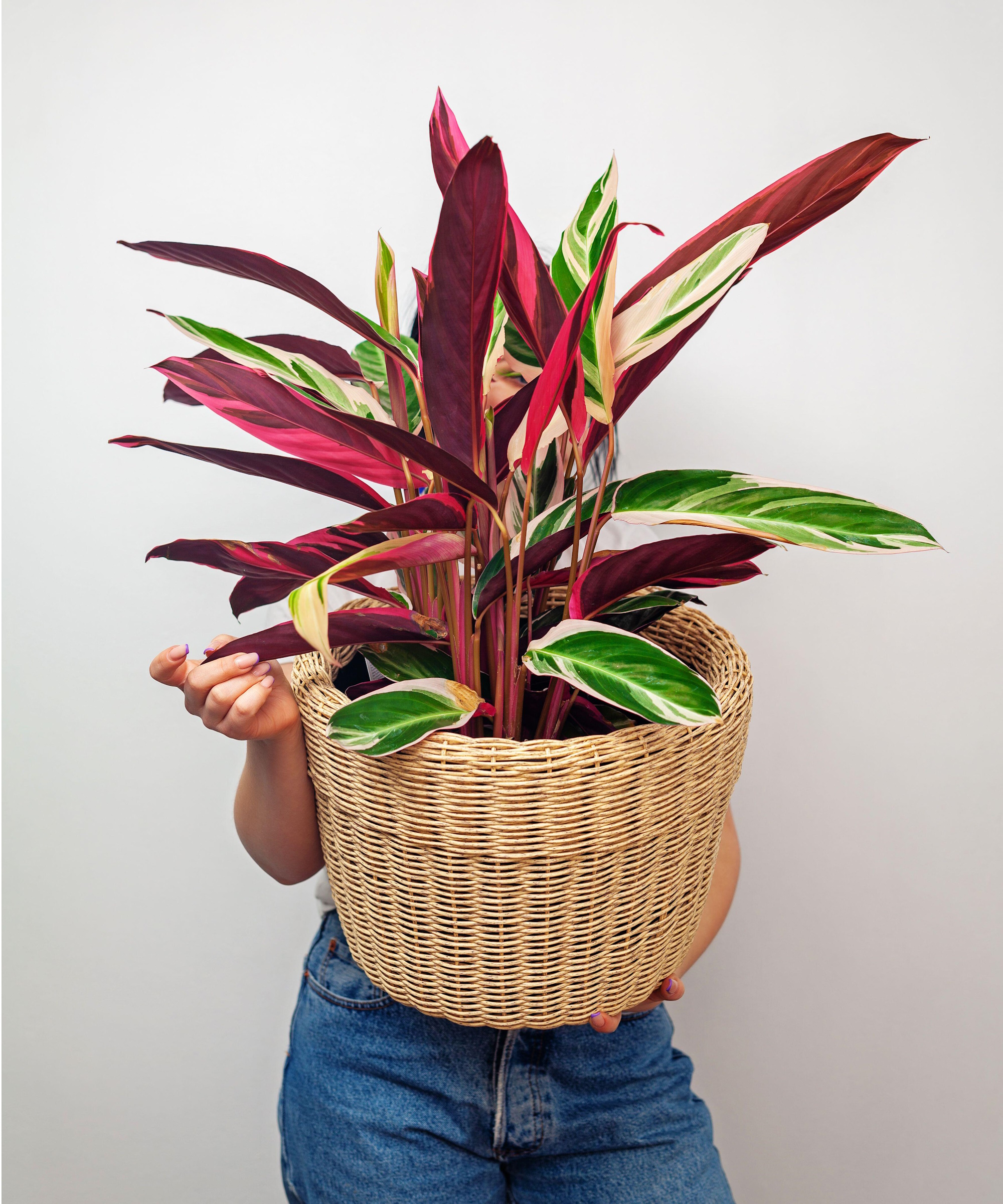How to care for a triostar stromanthe – 3 expert tips to keep this beautifully colorful houseplant happy
If you love variegated foliage, this indoor plant is a must-have for your collection


Houseplant lovers like me will know how addictive it can be to keep adding indoor plants to your interiors. They instantly brighten up your indoor space and fun foliage provides a talking point for your guests.
Arguably, the best indoor plants are variegated indoor plants - those with rainbow patterns across their shapely leaves. Triostar stromanthe, or Stromanthe sanguinea, is a staple among these, with slender green and pink foliage.
Unfortunately, these spectacular houseplants aren't always the easiest to get to grips with and will soon show they aren't happy in incorrect growing conditions. That's why we've asked experts how to care for a triostar stromanthe so that you can keep yours thriving for longer.

How to care for a triostar stromanthe
One of the most beautiful variegated houseplants, triostar stromanthe brings funky foliage to your interiors. Discover expert advice on how to care for this houseplant below.
1. Provide plenty of natural light

As with all houseplants, the first thing you need to do when you bring your triostar stromanthe home is find the best place for it to live. Providing the wrong light levels is a common indoor plant mistake that can lead to your houseplant failing.
'These gorgeous plants need very bright indirect light, but never direct sunlight,' says Diane Kuthy, the founder of How To Grow Everything. 'Direct sunlight can burn their delicate leaves,' she adds.
Native to rainforests in Brazil, triostar stromanthe naturally grows in dappled light under canopies of trees. In the home, you'll want to ensure your triostar stromanthe receives plenty of light to keep its colors bright. A lack of sunlight will cause the vibrant colors to fade, while too much could burn the foliage.
Design expertise in your inbox – from inspiring decorating ideas and beautiful celebrity homes to practical gardening advice and shopping round-ups.

Diane Kuthy is the founder and lead plant expert at How To Grow Everything, a collection of comprehensive grow guides for every plant and vegetable. Diane has over 10 years of gardening experience and she currently manages a 5-acre farm, a four-season greenhouse, over 50 perennial fruit and vegetable varieties, and a large indoor plant conservatory.
2. Don't let the soil become too wet

Although triostar stromanthe is among thirsty houseplants and doesn't do well when left to completely dry out, these plants don't enjoy waterlogged soil either.
'Keep the soil consistently moist but not soggy. Water when the top inch of soil has dried out,' says Julie Bawden-Davis, indoor plant expert at Healthy Houseplants. 'Use distilled, reverse osmosis or rainwater because tap water tends to have chlorine, chloramine and fluoride, which will cause brown leaf tips and other leaf issues,' she adds.
Triostar stromanthe is closely related to calatheas, although they are a different genus, which are also notorious for being fussy with water levels. Just like knowing how to water calatheas correctly, you should make sure you don't let your triostar stromanthe become too dry or too wet to ensure its foliage stays healthy and doesn't suffer from houseplant root rot.
Using a moisture meter, like this soil moisture meter from Amazon, can help you monitor water levels. Likewise, it can be a good idea to use a container with good drainage, like this planter with drainage holes from Amazon.
'It's also important to use a soil mix that promotes good drainage,' says Autumn Janus, plant expert from Perfect Plants. 'A combination of peat moss, perlite and a quality potting mix can provide the ideal growing medium for stromanthes,' she adds.

Julie Bawden-Davis is a garden author and University of California Certified Master Gardener, who has written several gardening books, including Indoor Gardening The Organic Way. In addition to running HealthyHouseplants.com, she shares indoor gardening advice on her YouTube channel @HealthyHouseplants.

Autumn is a horticulture specialist and marketing professional at Perfect Plants Nursery. With four years of experience in the horticulture industry, she has developed a passion for helping people create beautiful indoor and outdoor spaces to enjoy. Her expertise in horticulture encompasses a broad range of activities, including plant care and selection, landscape design, and maintenance.
3. Keep humidity levels high

Like other tropical indoor plants, triostar stromanthes are native to humid environments and therefore thrive best when humidity levels are higher.
'Stromanthe plants require high humidity to thrive, ideally between 40-60%,' says Autumn. 'Originating from tropical rainforests, these plants have high humidity requirements to maintain their vibrant foliage,' she adds.
There are many ways to increase humidity for houseplants, including moving them next to other plants or using a mister, like this plant mister from Greendigs.
'Keep these plants in a humid room such as a sunny bathroom near the shower or place a plant humidifier near your plant to keep it happy,' Diane Kuthy also suggests.
FAQs
Why are my triostar stromanthe leaves discoloring?
Triostar stromanthe is a beautiful houseplant loved for its vibrant, variegated foliage. If you notice that your stromanthe is starting to lose its color, it's an indication that something in its growing conditions isn't right. For example, not enough light can cause the colors to fade, while incorrect watering may cause your plant leaves to turn brown and droop. The best thing to do to revive your triostar stromanthe is assess its growing conditions, remove any damaged foliage and place it in optimal conditions.
Can you propagate a triostar stromanthe?
Yes, you can propagate triostar stromanthe - both by division and stem cuttings.
If you are dividing your triostar stromanthe, you will need to split the root ball using clean, sharp tools. Make sure each section has a healthy selection of stems, roots and leaves before replanting them into fresh potting soil and providing optimal care.
To propagate from cuttings, take healthy cuttings from just below a node, making sure there are several leaves on them. Remove any lower leaves before submerging the cutting in water. Once roots have developed, you can pot your cutting and provide optimal care to encourage growth.
Triostar stromanthes are among the most attractive indoor plants with funky foliage. They can be tricky to care for if you're new to houseplants, but providing some essential care will keep this vibrant plant happy for a long time.
Explore our expert list of other underrated houseplants to find more unique additions for your collection.

Tenielle is a Gardens Content Editor at Homes & Gardens. She holds a qualification in MA Magazine Journalism and has over six years of journalistic experience. Before coming to Homes & Gardens, Tenielle was in the editorial department at the Royal Horticultural Society and worked on The Garden magazine. As our in-house houseplant expert, Tenielle writes on a range of solutions to houseplant problems, as well as other 'how to' guides, inspiring garden projects, and the latest gardening news. When she isn't writing, Tenielle can be found propagating her ever-growing collection of indoor plants, helping others overcome common houseplant pests and diseases, volunteering at a local gardening club, and attending gardening workshops, like a composting masterclass.